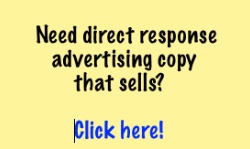Earlier this week, I happened to catch a snippet of the evening
news.
It featured a bunch of left-wing activists at UC Berkeley.
They were outraged that a campus police officer had shut
down an unlicensed hot dog vendor outside a football game,
and confiscated the cash in his wallet.
Video of the incident has gone viral on the internet,
sparking indignation from sea to shining sea. Someone even
set up a GoFundMe page which has raised something like
$87,000 for the vendor.
But wait just a darn moment. Aren’t liberals the very people
behind the laws that allowed this police officer to shut
this vendor down and take his money?
Aren’t they always telling us that we must be protected from
restaurant owners who want to poison us … and that only
the government can do the job with stringent, costly
regulations, complete with harsh punishment for violators?
So what changed? Why are they suddenly on the side of this
greedy business owner?
And the answer is simple. These activists had never seen the
real world costs of the regulations they support.
Sure, they may hear some statistic about the cost of
government regulation or the negative impact regulation has
on economic growth. But those things roll off you, me and
everyone else like water off a duck. They have little or no
impact.
But then comes this living, breathing demonstration: a man
trying to put food on his family’s table gets accosted and
shut down by an agent of the State.
And only then does it dawn on them that regulations have
costs as well as benefits.
This incident contains a powerful advertising and marketing
lesson for you. There is probably no better way to prove the
benefits of your product or service than with a powerful
demonstration.
As Claude Hopkins put it a bazillion years ago, “No argument
in the world can ever compare with one dramatic
demonstration.”
Old Claude sure knew his stuff.
An example: Perhaps you remember the classic Timex Watch TV
commercials, where the watches were put through the paces in
a series of “torture tests.”
The commercials featured a watch being run through a
dishwasher or attached to a boat propeller or even
jack-hammered. And they always pass the test with flying
colors, something that’s followed with the tag line, “It
takes a licking and keeps on ticking.”
These demonstrations conveyed the quality of Timex watches
more effectively than 10,000 words of copy could ever do.
An even better example — simply because it’s so dramatic
— took place 163 years ago at the 1854 World’s Fair.
In those days, people were terrified of elevators because if
the hoisting cable broke, the elevator would crash to the
ground and they’d die.
But then came Elisha Otis, who invented an automatic braking
system to stop runaway elevators.
And instead of trying to convince people that it worked, he
decided to show them — using himself as a guinea pig.
He enlisted the help of the famous showman P.T. Barnum to
attract a crowd by publicizing a demonstration of his new
braking system.
When the fateful day came, Otis climbed aboard his open air
“hoist machine” and had it raised high into the air. Then,
to the audience’s horror, the ropes holding the machine in
place were cut with an ax.
Screams rang out as Otis began plunging to certain death.
But within a second or two the automatic brakes kicked in
and stopped the machine’s fall after just a few inches.
Just like that, Otis’s elevator business was launched, the
orders came pouring in and skyscrapers were made possible.
And Otis had barely said a word.
You can build your business by emulating Elisha Otis. Simply
look for ways you can use the power of demonstration to
prove that the products or services you offer really do
deliver on the promises you make about them.
IIt’s a powerful and often-overlooked tactic that can work
near miracles.
After all, a simple demonstration helped hard-core Berkeley
activists see the light about the hidden cost of big
government. So perhaps it will help your prospects see the
light about the value of your products and services.
Try it. I think you’ll like it.

